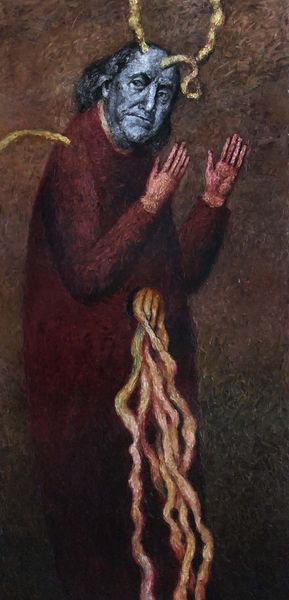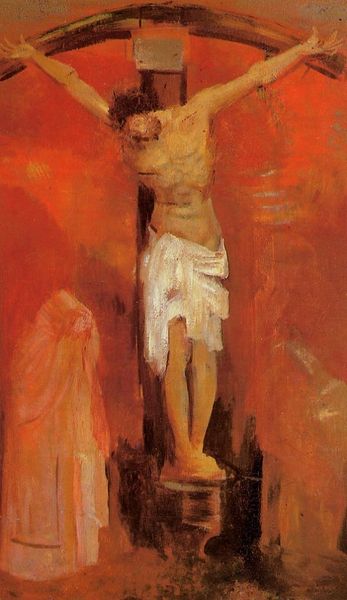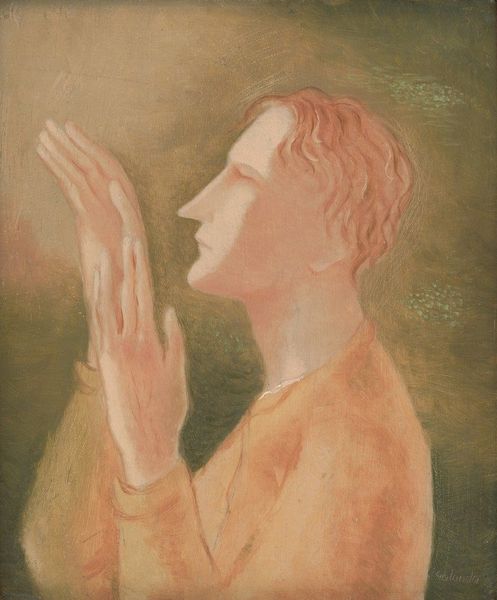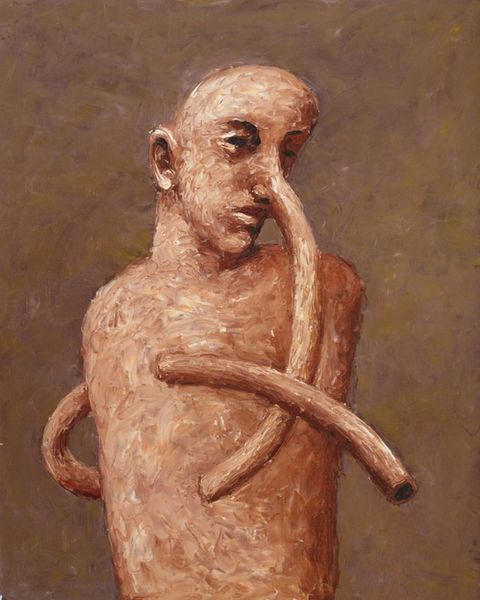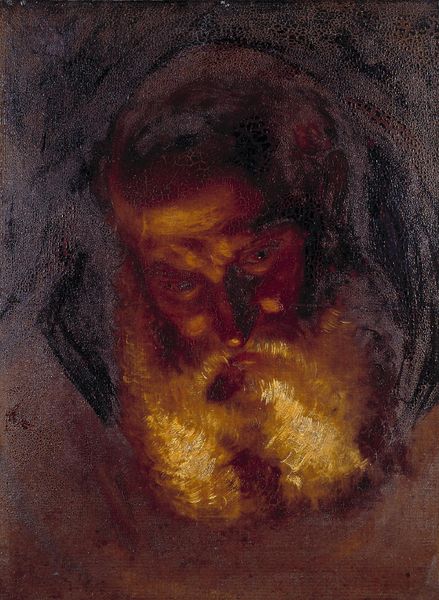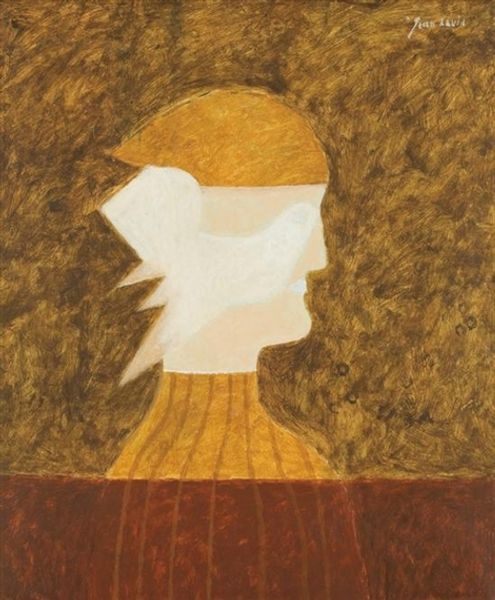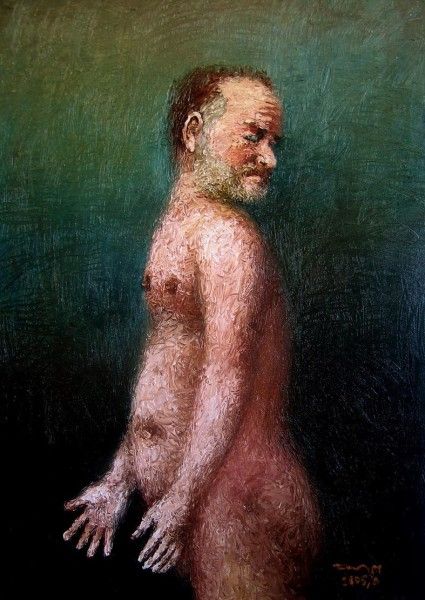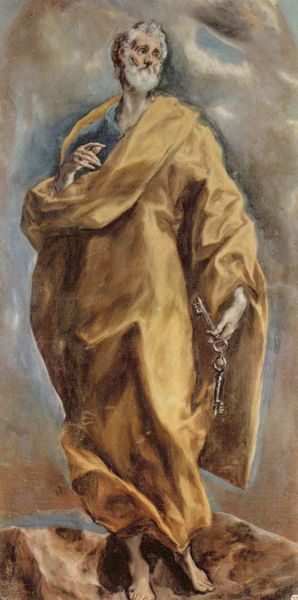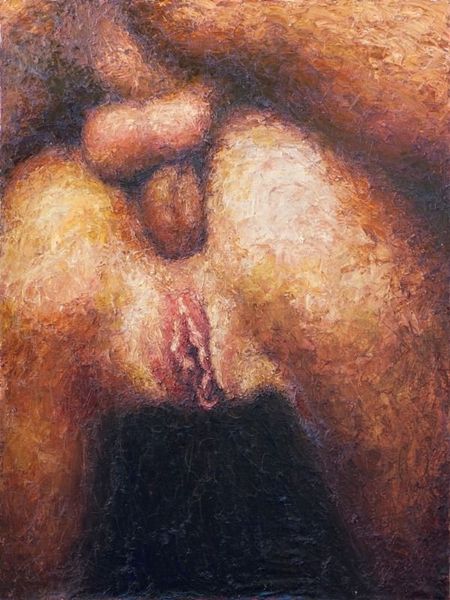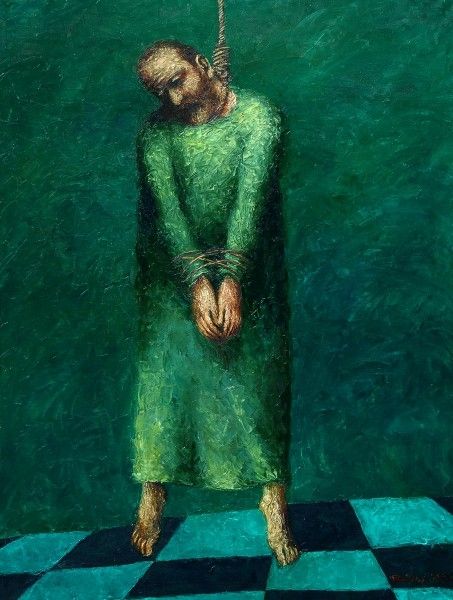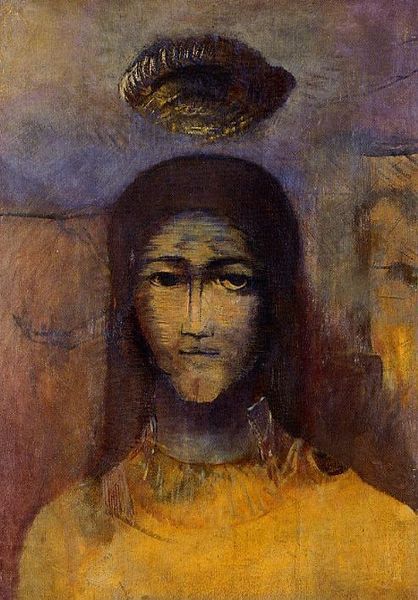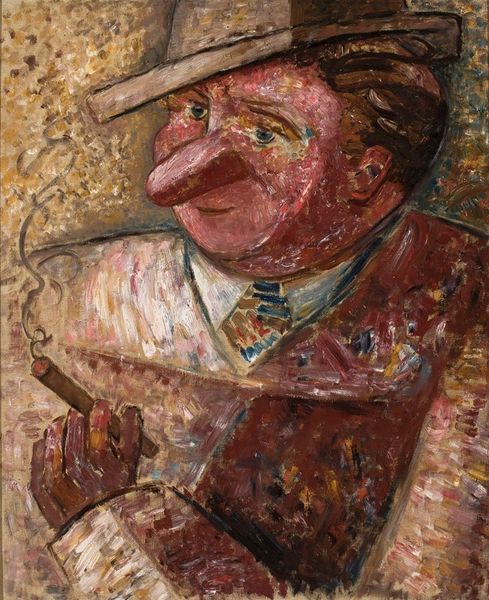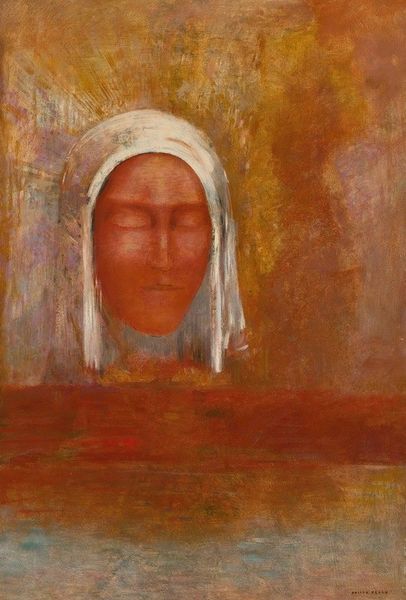
Copyright: Alexander Roitburd,Fair Use
Editor: So, here we have Alexander Roitburd's "Self Portrait in Red," painted in 2004, oil on canvas. The impasto application gives a raw, almost vulnerable feel, which clashes intriguingly with the regal pose. What do you make of the historical context influencing this particular self-representation? Curator: Given Roitburd's location and artistic activities in post-Soviet Ukraine, it’s crucial to consider the socio-political climate. The collapse of the USSR brought immense cultural shifts, and artists like Roitburd often grappled with questions of identity, belonging, and artistic freedom. Does the redness of the background, and the ambiguous expression in the self-portrait, perhaps speak to that? Editor: Absolutely. There's an uneasy feeling about the intensity of the colour that fights with the hand on the heart in seeming reassurance. It strikes me how his modernistic form clashes with what is understood from other historic works depicting power and standing, through similar compositions. Curator: Precisely! Consider also the institution of the art world itself during this period. How were Ukrainian artists perceived internationally? Did they have the same access to markets and audiences as their Western counterparts? And how did that impact their artistic choices? He would have had a deep awareness of how those from his geographic region are historically and currently percieved. How do you feel that impacts his own sense of power and position, visually? Editor: It’s like he's simultaneously claiming and questioning his position. The modernistic style suggests a break from traditional expectations, and places it into new forms, a reclaiming. But the hand on the heart is like, but am I valid?. Curator: An excellent observation. These self-portraits aren’t just about individual expression; they reflect a broader negotiation with history, power structures, and the very definition of art in a rapidly changing world. We see that modern Ukrainian artists need to play both roles. Editor: This really highlights the importance of looking beyond the purely aesthetic, seeing art as a product of social forces and a participant in cultural dialogues. Thank you! Curator: Indeed. And it demonstrates how a single image can encapsulate such complex historical and political narratives. It is essential to observe where something comes from.
Comments
No comments
Be the first to comment and join the conversation on the ultimate creative platform.
